| Reviews & Columns |
|
Reviews DVD TV on DVD Blu-ray 4K UHD International DVDs In Theaters Reviews by Studio Video Games Features Collector Series DVDs Easter Egg Database Interviews DVD Talk Radio Feature Articles Columns Anime Talk DVD Savant Horror DVDs The M.O.D. Squad Art House HD Talk Silent DVD
|
DVD Talk Forum |
|
|
| Resources |
|
DVD Price Search Customer Service #'s RCE Info Links |
|
Columns
|
|
|
Ernie Kovacs: The Centennial Edition
For what would have been Ernie Kovacs' 100th birthday, Shout Factory repackages the two previous Ernie Kovacs Collections into this 9-disc set. It can't be said enough how much of a pioneer Kovacs was in the early years of TV, having fun with and exploiting its capabilities in ways nobody else had thought of- first twisting the conventions of the talk show format (which inspired David Letterman in the 1980s) and then making the first of what could truly be called video art before his untimely death in 1962. The discs in this set are identical to those previously released in the two Ernie Kovacs Collection sets.
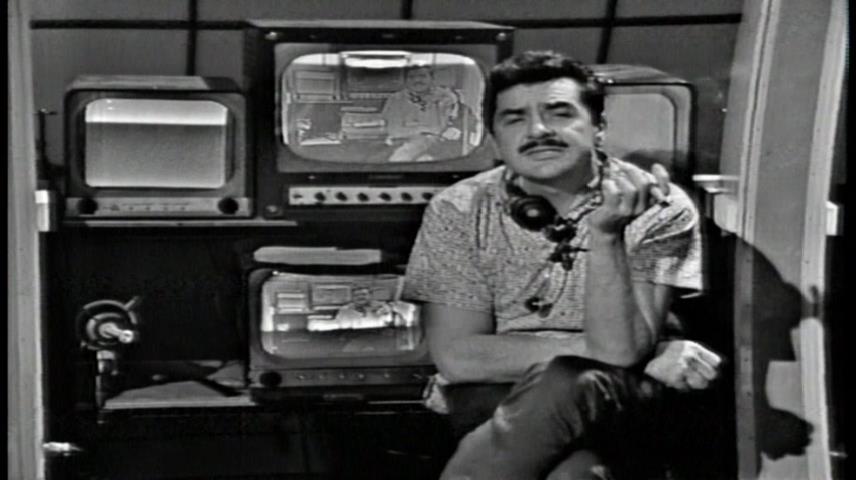
Each disc is given its own title, the first of which is "The Early Years" and consists of shows he did in Philadelphia. Two segments from "It's Time For Ernie" (from 1951) are his earliest surviving material- originally airing live and preserved through black and white kinescopes (done by shooting a video monitor on film, as videotape hadn't been developed yet). The first show opens with a bit where Kovacs puts a line of control knobs in front of him and remarks that most people didn't know how to properly adjust their TVs (which remains true today!) so he gives them a tutorial. He first demonstrates the horizontal hold knob while moving the corners of his mouth farther away from each other. It's interesting to think about how many original viewers were amused by this, as there didn't seem to be much interest in the technical side of things from the general public at least until home cameras and recorders showed up a couple decades later. Next we get two mostly-complete shows from "Ernie in Kovacsland" done the same year ("A short program, it just seems long") which uses a goofy set sort of like children's shows of the day but it's not so clear exactly what audience he's trying to play to. A highlight of this is where he goes out onto the street as the camera shoots him from the window, dragging a life-size ragdoll around as onlookers appear puzzled. Kovacs' soon-to-be wife Edie Adams is a supporting player (as she would be on most of his further shows) and provides a musical interlude for a brief moment of sanity. 1952's "Kovacs on the Corner" places him in a town-like set, also appearing a bit like a kids' show but seemingly geared to an older audience- a supporting character is a guy in a dog costume, but he's allowed to talk somewhat normally under his non-moving head piece. Pieces from "Kovacs Unlimited" show a panel quiz show parody and an interesting straight segment where Kovacs shows a voters' guide that viewers could get for free from CBS.
Three discs altogether are devoted to Kovacs' NBC morning show dating from 1955-56, using a castle set with a somewhat similar format to the mostly late-night shows that followed- big difference being that there were never any "featured guests" here to promote their latest movie or show, just Kovacs and his supporting team. The material here ranges from friendly banter behind a desk, venturing out into the studio audience to poke fun at them and hand out prizes like RCA portable radios, and of course lots of comedy sketches. Some of these are clearly re-used from the earlier shows seen on the first disc, but of course there was a good chance that many viewers hadn't seen those before. A fun recurring segment is a puppet show, "The Kapusta Kid in Outer Space" chronicling a bear and his monkey sidekick launching a spaceship and finding themselves locked up on the square planet they land on. Another is "Mr. Science" where he riffs on the era's "Mister Wizard" with a kid assistant who's often smarter than he is. "Howard, the World's Strongest Ant" has Kovacs speaking to the invisible ant on a small setup where it seems someone underneath is manipulating things with magnets, making a small car appear to be driven by the ant for example. This seems to have been a popular segment as gifts from viewers for "Howard" are shown sent in from across the country. Kovacs also slips into characters such as Percy Dovetonsils, the lisping effeminate poet sipping wine from his easy chair reciting odes. Edie Adams also provides some rather straight musical interludes, but several of these are cut due to "cost-prohibitive" music clearance issues.
Three NBC Evening Shows from 1956 have a similar format but on a larger scale, obviously playing to a larger audience. This includes some of the same characters and more long-form sketches including a "Superman" parody as well as quick blackout gags. Edie Adams does a rather sexually suggestive weather bit ("I just know we're gonna enjoy every degree of that old Fahrenheit") and shows that she doesn't really know her way around a map. A lengthy movie parody shows Kovacs as composer "Berlin Shwartz," who goes from rags to riches and back to rags again on the strength of one big hit. A few video effects are also demonstrated, including an intro where small humans appear to be arranging the title board as Ernie commands them- it's a shame that true video masters don't exist to show off how these actually looked when done live. Again, Edie provides a few musical interludes most of which remain intact here.
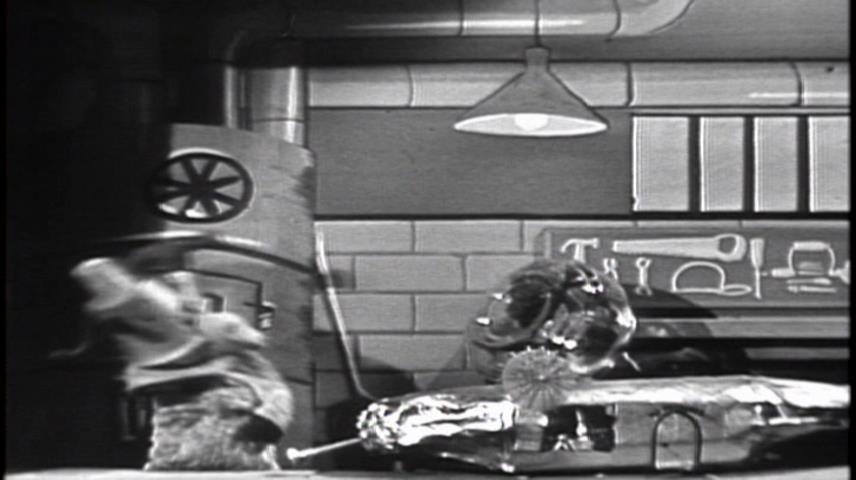
A disc devoted to the late 1950s includes the only color show in the set- this is also from a kinescope film sourced from a rather old-looking tape transfer. While this is better than nothing, it appears a bit blurry and includes some mesmerizing video effects set to music that must have looked amazing during the live broadcast. Kovacs even makes a point of mentioning that these were being done live and not recorded beforehand. A segment with the character "Eugene" is featured, which has no spoken dialogue but plenty of exaggerated sound effects. Eugene visits a library where stuffy patrons silently read, and his footsteps cause thunderous sound- he then picks up a book titled "Digging the Panama Canal" where the actual sounds of machinery digging blares upon opening. Another book titled "Edison" shines a bright light in his face. He then sits down at a table for a snack and finds everything he sets down rolling over into the lap of another silent guest seated at the end- done through the use of a tilted set and camera. The ever-popular Nairobi Trio bit is also featured, with a 3-piece orchestra of hat-wearing gorillas. The black and white "Kovacs on Music" special is done on a set with no audience, which Kovacs seems to have preferred. This is quite high-brow for network TV, with focuses on classical music including a performance of "Swan Lake" with dancers in gorilla suits. There's also a sketch of serious opera singers finding themselves reduced to singing a commercial jingle.
A total of four episodes of Kovacs' panel show "Take a Good Look" are included, all from black and white videotape sources that are quite relieving to see after all of the kinescoped material. The format of these has host Kovacs bring out a guest and then shows videotaped sketches giving clues to the celebrity contestants as to who exactly that guest is. This is far more easier said than done, as the clues provided by the sketches are quite out there- the easiest one to explain here involves someone ducking an object being thrown at them, which we're supposed to then infer relates to Donald Duck which mystery guest Clarence Nash is best known as providing the voice for. Later episodes of this include more straightforward explanations of the sketches for those who were left confused on both sides of the screen. For most viewers at home it was probably easier to just enjoy the humor of these sketches and not think too much about their meaning.
Disc 5 features what is in my opinion the best material in this set- five half-hour specials shot on videotape in 1961 and containing at most times no spoken words aside from a few brief intros from the studio control room. These are absolutely amazing both in regards to the high-quality presentation of early video effects as well as the humor achieved with zero dialogue, with no laughter or applause tracks either. These would likely confuse the average TV audience of any decade since then. There's many quick blackout gags similar to what was seen later that decade on "Laugh-In", but also some truly bizarre pieces such as a kitchen set where objects dance, containers open and close by themselves and water pours from sinks all set to music by Esquivel. The last special aired just after Kovacs' death and includes hilarious send-ups of what was considered modern art at the time. Many segments in these simply defy description, but really show how Kovacs was experimenting with the medium and the picture quality almost makes us feel like we're watching it happen in front of us.
The remaining discs are comprised mostly of additional kinescoped episodes and clips from the NBC morning show, which had the most material preserved. The final disc is titled "Rarities" and includes an unaired filmed sitcom pilot called "The Medicine Man" starring Kovacs in the title role- a traveling swindler accompanied by Buster Keaton as his mostly-mute Indian assistant which of course is now entirely politically incorrect. Kovacs' only known on-camera interview is included where he talks a bit about his thought process and the general banality of most TV programming, despite it being what he considers an incredible invention. (If only he could have seen how much worse it would become.) Additional "Bonus Features" are spread across all discs and will be outlined in the "Extras" section below.
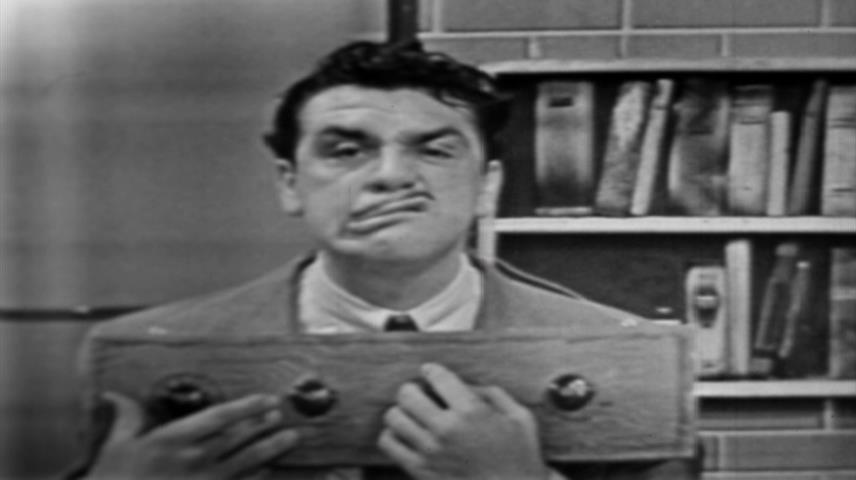
As mentioned, most material is from kinescope sources as videotape was either too expensive to use or simply unavailable at the time. While most of it is watchable, I often find these a bit frustrating when considering how pristine these shows looked when broadcast live- even in the olden days, the quality was comparable to that of any live broadcast you'd see in decades following (color and hi-def not withstanding, of course). Kinescopes present one of the few practical uses of the "motion-smoothing" setting found on most modern HDTVs, as that can almost appear to restore the missing frames and the ‘live' look that was originally seen, but of course that isn't perfect. Kinescopes typically also show a bit of flicker from the picture tube as well as inevitable dirt, scratches and splices on some shows. The videotaped 1961 specials and "Take a Good Look" episodes fare much better- while some analog video noise is present they still look amazingly clean in comparison. The "Medicine Man" pilot was shot on film and is a recent transfer, up to the usual standards of filmed TV material on major-label DVDs. Unfortunately as I've seen on several Shout Factory DVD releases, there are some noticeable compression artifacts and there's a slight authoring glitch during one of the morning shows on the eighth disc.
TV audio of course was purely mono back then. All discs are encoded in 2-channel Dolby Digital and keep the sound properly centered on most material, but some shows have the sound noticeably spread across the front channels as if some sort of "simulated stereo" processing was used which is a bit annoying. Like the picture, the audio quality of the videotaped material is amazingly clean considering its age.
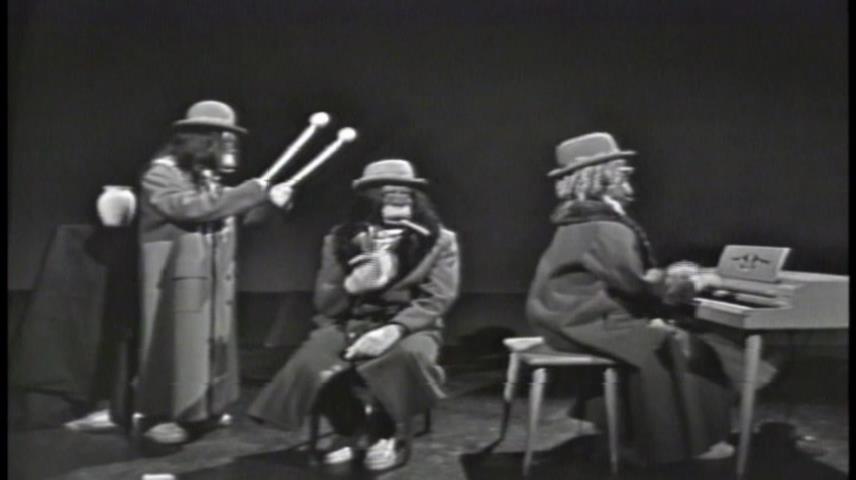
A segment titled "Remembering Ernie" with Laugh-In's George Schlatter and Jolene Brand, and a post-show discussion shot at Hollywood's Egyptian Theater with Harry Shearer are extras produced for these discs, giving us the most recent recollections of Kovacs and his influence on today's talent.
A number of extra sketches from other NBC Morning Show episodes are included, as well as a special effects test from one of the evening show sketches and some videotaped clue sketches from "Take a Good Look". A 1987 Television Academy tribute featuring Carl Reiner and Jack Lemmon assesses Kovacs' impact at that point in time. The "Baseball Film" which was used twice on the air, showing Kovacs as a number of players and audience members at a game, and a short silent film spoof called "The Mysterious Knockwurst" are also here. We also get some home movie footage of Kovacs and company on set (including some shot during production of Our Man in Havana which was found on an unlabeled reel obtained on Ebay) and playing golf, and some cigar commercials with both Ernie and Edie Adams. Kovacs hosted an early silent-movie showcase on TV called "Silents Please" and a kinescoped intro from that is included. Finally, there's somewhat worn theatrical trailers for two movies Kovacs appeared in, Wake Me When It's Over and Five Golden Hours.Packaging for this set is a downgrade from the two separate releases, as there are no printed inserts of any kind included thus losing the extensive liner notes as well as any clear indication of what is included on each disc. The set also comes in an elaborate hinged keepcase, a tab of which broke off from my copy during shipping leaving the disc holders inside unsecured. To Shout Factory's credit though, the discs are generously chaptered with pretty much every sketch indexed. Many times releases like this have had only a few segments or even none at all chaptered, so this is appreciated.
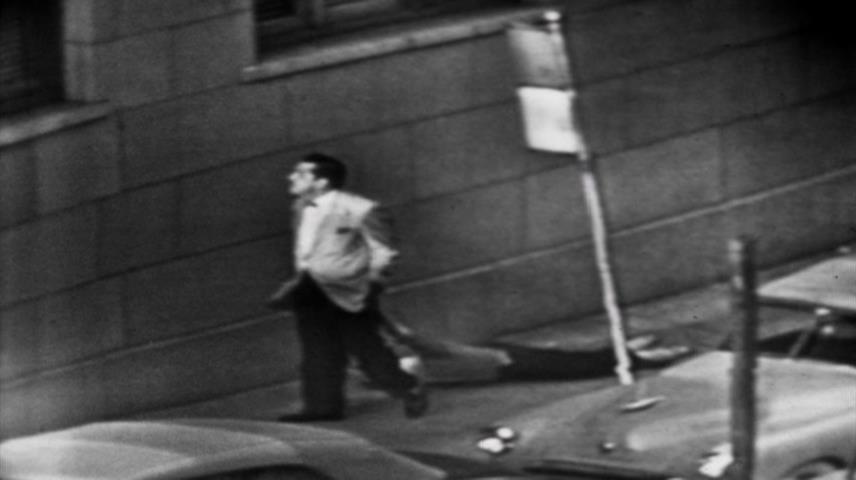
Ernie Kovacs was truly ahead of his time, and it's unfortunate that his career was cut short prematurely after a fatal car accident. The material here gives a good representation of his work as well as a general feel for early television when it was an exciting new medium and the programmers were willing to take chances to see what worked. I found the 1961 videotaped specials on Disc 5 to be the most compelling out of everything else- other material from these was included on a now out of print 2-disc set put out in 2000; it would be nice to have all of those surviving specials here.
Jesse Skeen is a life-long obsessive media collector (with an unhealthy preoccupation with obsolete and failed formats) and former theater film projectionist. He enjoys watching movies and strives for presenting them perfectly, but lacks the talent to make his own.
|
| Popular Reviews |
| Sponsored Links |
|
|
| Sponsored Links |
|
|
| Release List | Reviews | Shop | Newsletter | Forum | DVD Giveaways | Blu-Ray | Advertise |
|
Copyright 2024 DVDTalk.com All Rights Reserved. Legal Info, Privacy Policy, Terms of Use,
Manage Preferences,
Your Privacy Choices | |||||||












